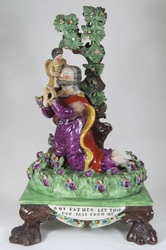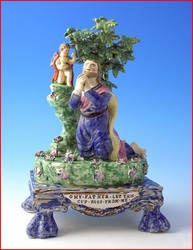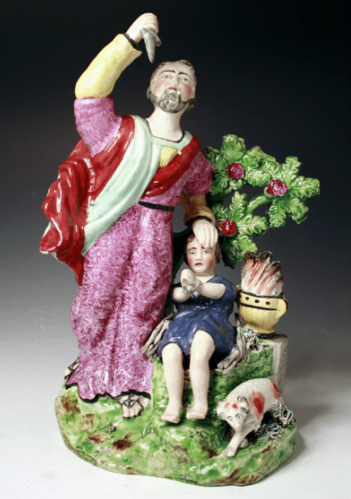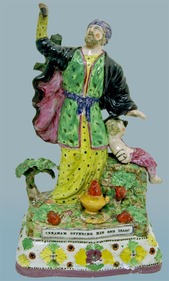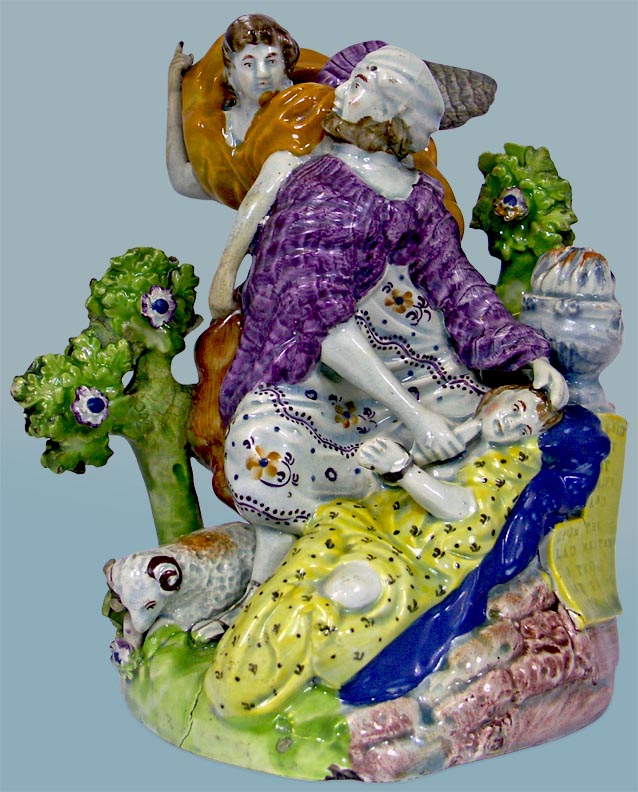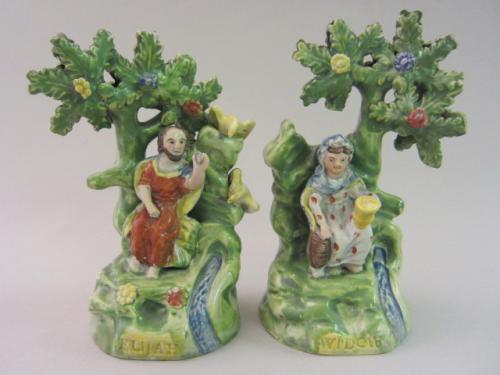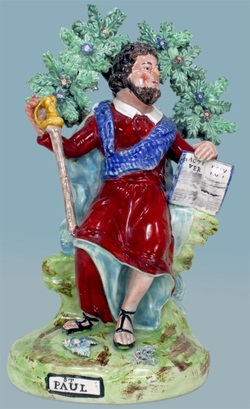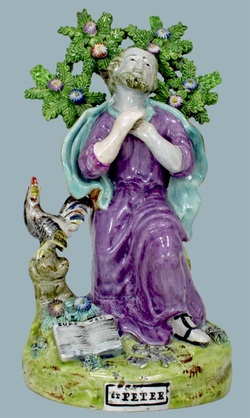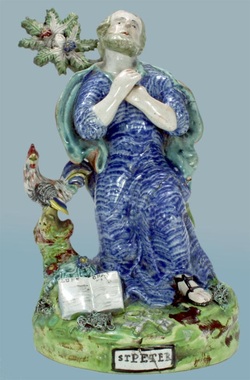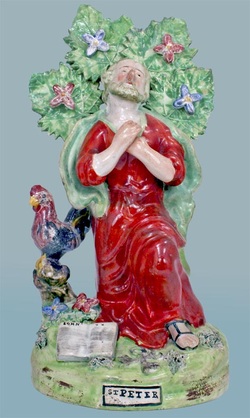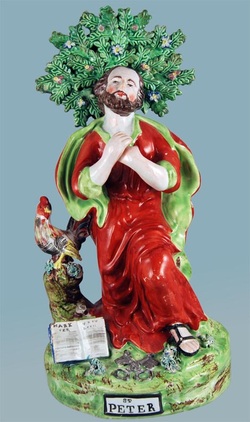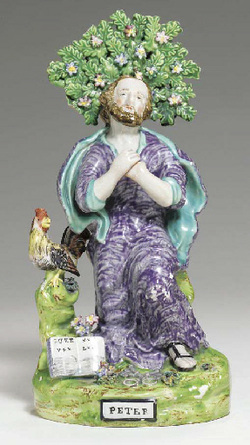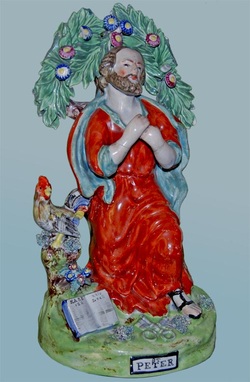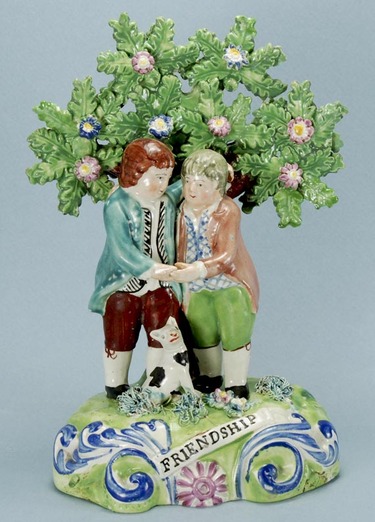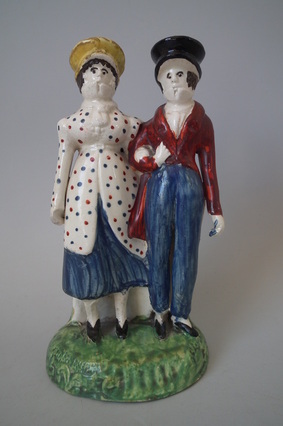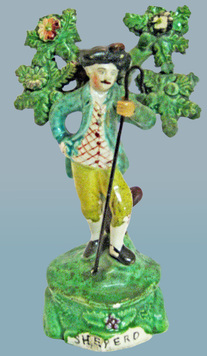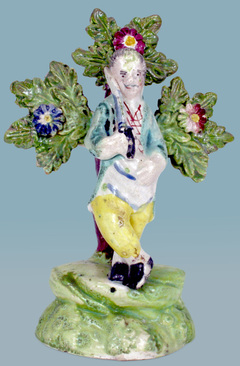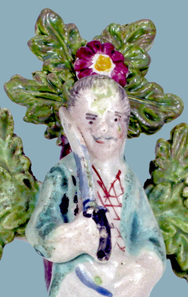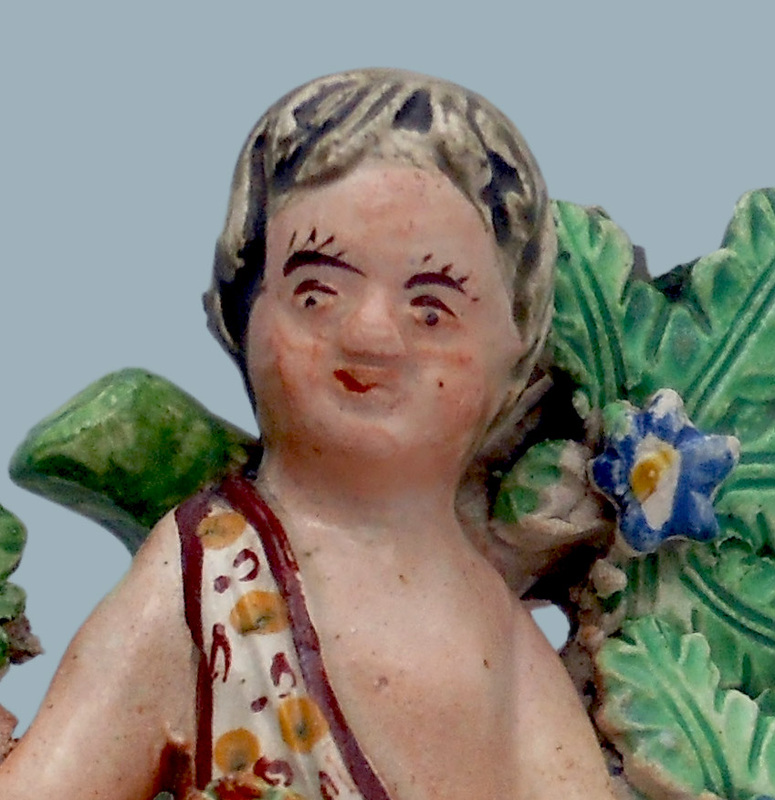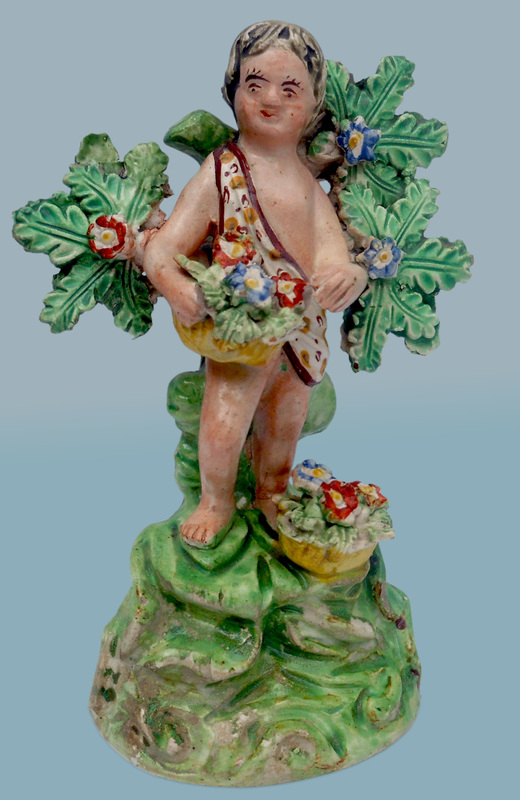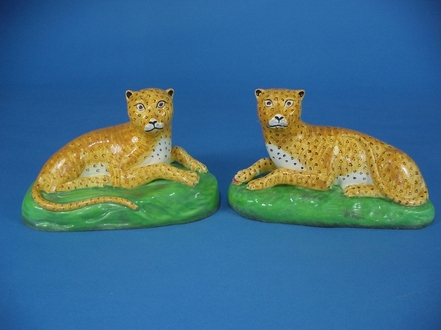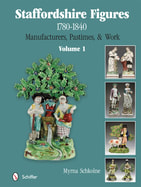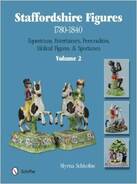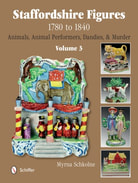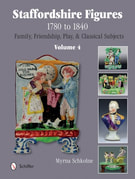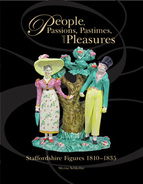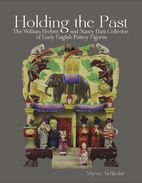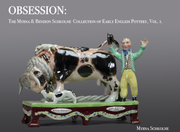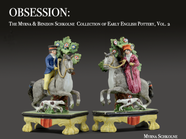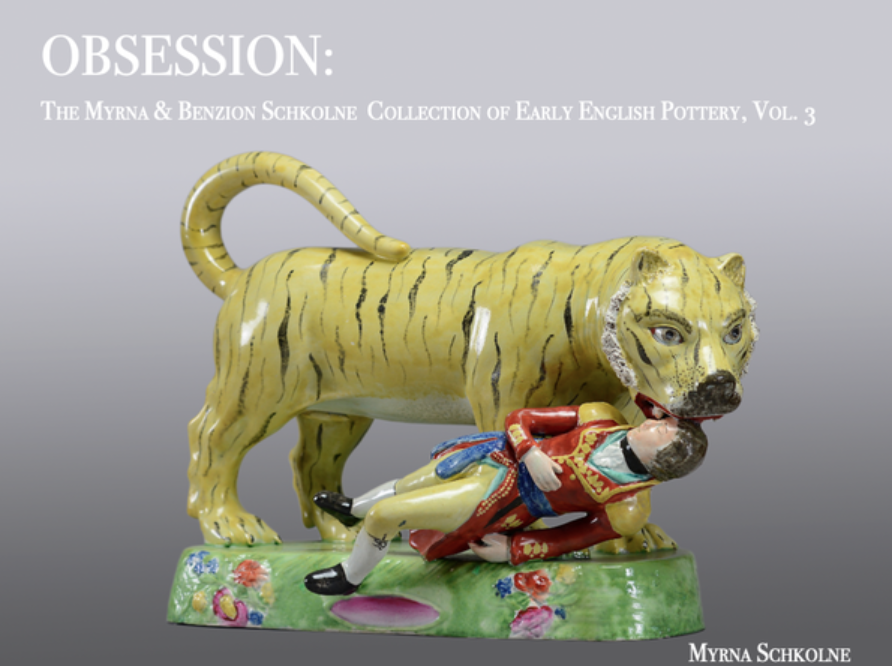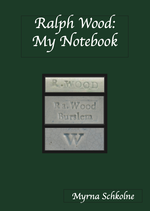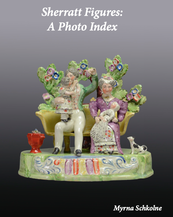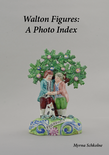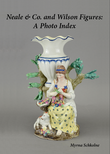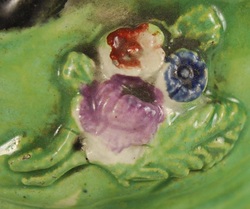
Here is a close up of one of those tell-tale sprigs from another "Sherratt" figure. Train your eye to look for it. It really is a very helpful pointer to an attribution.
"Sherratt" made Christ's Agony on other bases and with other bocages, as you see below. (Center: Brighton Museum. Right: Formerly in the stock of Roger De Ville.) The variations are apparent. The example on the blue base is unusual in that I haven't seen a base painted blue on any other "Sherratt" figure. But John's figure gets the prize, in my opinion. Not only is it in fabulously complete condition, it has that lovely base and the title CHRISTS AGONY--and, after all, is that not what the New Testament tale is all about?
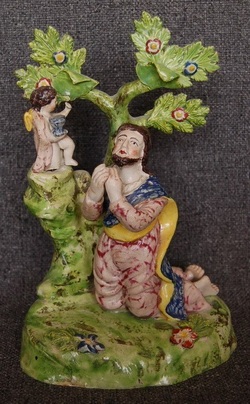
Other potters too portrayed Christ in the Garden. Here we have an example that I attribute to what I call the "Leather Leaf Group." It is currently on eBay, but at a considerable premium to John's figure.
The tale of Abraham and Isaac must have been popular in its time, as several pot banks had a go at capturing it in clay. John's figure is simple and strong--it encapsulates the essence of Abraham's dilemma--and that's what I like about it. Some figures, on the other hand, can be quite elaborate, and, as a result, they are frequently very damaged today. The figures below are both from the Potteries Museum. The right hand figure can also be seen in my book.

